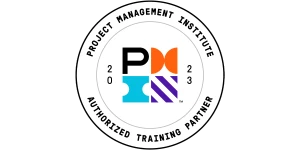Drawing an analogy from martial arts, where different colored belts signify increasing levels of expertise, Lean Six Sigma belts are designations that represent a person’s achieved proficiency, depth of training, and expected role in implementing Lean Six Sigma methodologies.
These belts clearly define distinct Six Sigma training levels and the corresponding Six Sigma certification levels, providing a roadmap for development.
Let’s break down the different belts of Six Sigma, from foundational awareness to expert leadership. We’ll explore their specific roles, what you can expect to learn at each stage, the typical candidates for each level, and importantly, how 6Sigma.us provides industry-leading, practical training and respected Six Sigma certifications for each of these Lean Six Sigma belt levels.
Six Sigma Belt Levels & Detailed Certification Paths
Understanding the Lean Six Sigma belt order provides a clear picture of how expertise is structured within the methodology. Think of it as a progressive ladder, with each of the Six Sigma belts in order building upon the knowledge of the previous level, from foundational understanding to expert leadership.
To help you quickly understand the primary distinctions between the core Six Sigma certification levels, this table summarizes the main differentiators. These represent the different Lean Six Sigma certification levels and typical Six Sigma training levels offered by 6Sigma.us.
(Note: The above table is a general guideline and can vary based on individual pace and training format. Project completion time is additional and varies for each individual. Pricing indicated is a starting point and subject to change.)
The Lean Six Sigma belts in order are:
- White Belt
- Yellow Belt
- Green Belt
- Black Belt
- Master Black Belt
Alongside these, the Six Sigma Champion plays a crucial leadership and sponsorship role, vital for the success of any Lean Six Sigma deployment.
Now, let’s delve deeper into each Lean Six Sigma belt level to help you find your fit, understanding what each of the Six Sigma certification belts entails, who it’s for, and how 6Sigma.us can guide you, along with the Six Sigma belts cost.
Lean Six Sigma White Belt Certification
- Core Purpose: Establishes foundational awareness of Lean Six Sigma concepts and vocabulary. White Belts understand the basic principles and their role in supporting an improvement culture.
- Who is it for?
- Entry-level professionals, support staff, team members in organizations starting their Lean Six Sigma journey, students, or anyone needing a basic understanding of Lean Six Sigma principles and terminology. No prior experience is required.
- Key Learning & Skills
- Understand core Lean concepts (e.g., value, waste) and Six Sigma principles (e.g., variation, DMAIC overview). Learn common Lean Six Sigma terminology and the roles of different belt levels.
- Typical Role/Focus within Lean Six Sigma
- Provides foundational awareness. Supports an improvement culture by understanding the language and goals of Lean Six Sigma initiatives.
- Project Involvement
- May be asked to sponsor or champion improvement activities or participate in ongoing projects within their teams or departments.
- Why this Belt?
- To gain a fundamental understanding of Lean Six Sigma, speak the language of process improvement, and become a more informed participant in an organization committed to quality. It’s the perfect, low-barrier entry into the Lean Six Sigma world.
- 6Sigma.us Training & Certification Path
- Our White Belt training is efficiently delivered through flexible formats: a comprehensive Self-Paced Online course, engaging Instructor-led Virtual sessions, or tailored On-Site training for corporate groups.
Lean Six Sigma Yellow Belt Certification
- Core Purpose: Develops individuals into informed team members who can actively support Green Belt or Black Belt projects. Yellow Belts understand basic tools and can assist in data collection and process mapping.
- Who is it for?
- Team members who will actively participate in Lean Six Sigma projects, subject matter experts (SMEs) supporting Green or Black Belts, and individuals who want to move beyond awareness to active contribution. Often a next step after White Belt or a starting point for those needing to be hands-on in projects.
- Key Learning & Skills
- Understand the DMAIC process more deeply. Learn basic process mapping, data collection techniques, fundamental Lean Six Sigma tools (e.g., Pareto charts, fishbone diagrams), and how to effectively contribute to project teams.
- Typical Role/Focus within Lean Six Sigma
- Acts as an informed and active project team member, supports data gathering and analysis efforts, and helps implement solutions under the guidance of Green or Black Belts.
- Project Involvement:
- Actively supports and contributes to Lean Six Sigma projects led by Green or Black Belts. May assist with specific tasks within DMAIC phases.
- Why this Belt?
- To become a valuable, contributing member of an improvement team. This Lean Six Sigma belt level bridges the gap between basic awareness and active participation, equipping you with practical skills.
- 6Sigma.us Training & Certification Path
- We offer Yellow Belt training through our engaging Self-Paced Online modules, interactive Live Virtual classrooms (for individuals and groups), and dedicated On-Site corporate sessions.
Lean Six Sigma Green Belt Certification
- Core Purpose: Equips professionals to lead small to medium-scale improvement projects using the DMAIC methodology. Green Belts are skilled in data analysis and problem-solving.
- Who is it for?
- Process improvement specialists, project managers, engineers, analysts, supervisors, and professionals tasked with leading departmental improvement projects or playing a key role in larger initiatives. Often requires some professional experience.
- Key Learning & Skills
- Mastery of the full DMAIC methodology. Ability to lead small to medium-sized improvement projects, apply statistical analysis tools (using software like Minitab), conduct root cause analysis, develop and implement solutions, and create control plans.
- Typical Role/Focus within Lean Six Sigma
- Leads Green Belt-level improvement projects, often within their functional area. Works with data to solve problems, facilitates team meetings, and drives measurable results. May support Black Belt projects.
- Project Involvement
- Leads smaller to medium-sized projects independently. Often required to complete at least one successful project for full certification.
- Why this Belt?
- To gain the skills and recognition to lead impactful improvement projects, deliver tangible results (cost savings, quality improvements), and significantly advance your career in process improvement. This is often seen as the workhorse of the Lean Six Sigma belts.
- 6Sigma.us Training & Certification Path
- Our comprehensive Green Belt training is available via our in-depth Self-Paced Online course, highly interactive Live Virtual sessions, and intensive On-Site training programs often delivered in a multi-week format.
Lean Six Sigma Black Belt Certification
- Core Purpose: Designates expert practitioners who lead complex, cross-functional improvement projects of strategic importance. Black Belts master advanced statistical tools, mentor Green Belts, and drive significant organizational change.
- Who is it for?
- Experienced professionals, often certified Green Belts, who will lead complex, cross-functional, and strategically important improvement projects. Aimed at those who will also mentor Green Belts and act as internal Lean Six Sigma experts.
- Key Learning & Skills
- Advanced understanding of DMAIC, mastery of sophisticated statistical analysis tools (including Design of Experiments – DOE), change management leadership, project portfolio management basics, and advanced problem-solving techniques.
- Typical Role/Focus within Lean Six Sigma
- Leads complex, high-impact improvement projects. Mentors and coaches Green Belts and project teams. Acts as a full-time internal consultant and change agent for deploying Lean Six Sigma.
- Project Involvement
- Leads complex, strategically significant projects. Usually requires completion of one or more successful, high-impact projects for full certification, demonstrating substantial ROI.
- Why this Belt?
- To become a recognized expert and leader in Lean Six Sigma, capable of tackling an organization’s most challenging problems, driving significant financial and operational improvements, and mentoring others. This is a pinnacle Lean Six Sigma belt level for practitioners.
- 6Sigma.us Training & Certification Path
- Our rigorous Black Belt training is designed for deep skill development, typically offered through blended programs that combine intensive Live Virtual or On-Site instruction (often in multiple week-long sessions spread over months) with dedicated project application time.
Lean Six Sigma Master Black Belt
- Core Purpose: Represents the highest level of technical and organizational Lean Six Sigma leadership. Master Black Belts train and coach Black Belts and Green Belts, develop deployment strategies, and advise senior leadership.
- Who is it for?
- Highly experienced and successful certified Black Belts with a proven track record of leading multiple complex projects, mentoring numerous Belts, and driving strategic Lean Six Sigma deployments.
- Key Learning & Skills
- Deepest level of statistical and Lean Six Sigma expertise, advanced program management, strategic deployment planning, organizational change leadership, curriculum development, and expert-level coaching and mentorship.
- Typical Role/Focus within Lean Six Sigma
- Develops and deploys Lean Six Sigma strategy across an organization, trains and certifies Black Belts and Green Belts, advises senior leadership, manages complex project portfolios, and serves as the ultimate Lean Six Sigma subject matter expert.
- Project Involvement
- Oversees and consults on multiple high-level projects and Lean Six Sigma program deployment rather than leading individual DMAIC projects.
- Why this Level?
- To achieve the highest recognized level of Lean Six Sigma expertise and leadership, capable of transforming entire organizations.
- 6Sigma.us Training & Certification Path:
- Master Black Belt development with 6sigma.us typically involves a custom pathway based on extensive prior experience, advanced training modules, and significant contributions to the field/organization.
Six Sigma Champion Training
- Core Purpose: While not always a formal “belt” involving a specific certification exam in the same vein, Champions are typically members of senior leadership. They provide crucial organizational support, remove roadblocks for project teams, and ensure projects align with strategic business objectives. Their buy-in and active involvement are critical for the success of any Lean Six Sigma deployment.
- Who is it for?
- Business leaders, executives, managers, and process owners who will sponsor and support Lean Six Sigma projects and deployments within their organization.
- Key Learning & Skills
- Understand the fundamentals of Lean Six Sigma from a leadership perspective, how to select impactful projects, how to support and empower project teams, remove roadblocks, and drive the Lean Six Sigma culture.
- Typical Role/Focus within Lean Six Sigma
- Provides strategic direction for Lean Six Sigma initiatives, champions projects, allocates resources, ensures alignment with business goals, and helps sustain improvements.
- Project Involvement
- Sponsors and oversees projects, rather than executing them directly.
- Why this Training?
- To equip leadership with the knowledge to effectively drive and support Lean Six Sigma initiatives for maximum organizational benefit. This Six Sigma Champions training is vital for successful deployments.
- 6Sigma.us Training & Certification Path
- We offer focused Champion training, typically delivered as concise workshops or seminars, available On-Site or via Live Virtual sessions.
Choosing Your First (or Next) Lean Six Sigma Certification
One of the most common questions we hear is, “Which Six Sigma belt should I start with?” or “What Six Sigma certification should I get to begin my journey?” The answer depends on your current role, experience, career goals, and how deeply you intend to be involved in process improvement activities.
Typical Progression & Starting Points:
For Absolute Beginners or Broad Organizational Awareness
Starting with Lean Six Sigma White Belt is an excellent choice. It’s a low-commitment way to understand the fundamentals and determine if Lean Six Sigma is right for you.
For Active Team Contribution
If you anticipate being an active member of project teams, collecting data, or needing a solid working knowledge of basic tools, Lean Six Sigma Yellow Belt is often the ideal starting point, or the next step after White Belt.
For Leading Smaller Projects (with some prior experience)
If you have relevant professional experience (e.g., in project work, analysis, or a specific operational area) and your goal is to lead improvement projects within your department, you might consider starting directly with Lean Six Sigma Green Belt. While White or Yellow Belt knowledge is beneficial, it’s not always a strict prerequisite for our Green Belt program if you have the right background.
For Advanced Leadership (experienced Green Belts)
Six Sigma Black Belt is typically pursued by individuals who are already certified Green Belts and have successfully completed Green Belt projects. Direct entry into Black Belt is rare and usually requires significant, demonstrable prior experience and equivalent Green Belt-level knowledge, subject to review by 6Sigma.us.
Are Six Sigma Belts Worth The Investment?
A crucial question many ask is, “Are Six Sigma belts worth it?” Considering the time and financial commitment, it’s a valid inquiry. The overwhelming evidence and industry experience point to a clear yes – for both individuals and the organizations they serve.
For Individuals
Investing in Lean Six Sigma certification is an investment in your professional future.
- Enhanced Career Opportunities: Certified individuals are highly sought after by employers across virtually all industries, from manufacturing and healthcare to finance and technology.
- Development of In-Demand Skills: You gain practical, transferable skills in problem-solving, data analysis, project management, and leadership.
- Increased Salary Potential: While varying by belt level, experience, and industry, certified Lean Six Sigma professionals generally command higher salaries due to their proven ability to deliver results.
- Greater Job Satisfaction: Being equipped to make tangible improvements and solve challenging problems often leads to increased job satisfaction and recognition.
For Organizations
The ROI from investing in employee Six Sigma certification is significant and multifaceted.
- Measurable Financial Returns: Certified professionals lead projects that directly result in cost savings, waste reduction, and increased revenue.
- Improved Efficiency and Productivity: Streamlined processes mean work gets done faster, better, and with fewer resources.
- Enhanced Quality and Customer Satisfaction: A focus on reducing defects and meeting customer requirements leads to higher quality products/services and happier customers.
- Data-Driven Culture: Empowers your organization to make decisions based on facts and data rather than intuition alone.
- Competitive Advantage: A workforce skilled in continuous improvement is a powerful asset in today’s competitive landscape.
- Industry Recognition & Demand: Lean Six Sigma methodologies are globally recognized and adopted by leading organizations worldwide. There is consistent and growing demand for professionals who hold these certifications and can demonstrate their ability to apply these powerful tools.
Which Six Sigma certification is most recognized? This is a common question, and while several reputable bodies offer Six Sigma certifications, the “most recognized” isn’t about a single name but rather the value and rigor behind the certification. A certification’s true recognition comes from:
- The reputation and experience of the training provider: 6Sigma.us has decades of experience and is a respected name in Lean Six Sigma training.
- The comprehensiveness of the curriculum and the quality of instruction: Our programs are led by experienced Master Black Belts.
- The emphasis on practical application and real-world project completion: Our requirement for project certification for Green and Black Belts ensures that our certified professionals can do, not just know.
- Industry acceptance of the standards taught: We align with generally accepted Lean Six Sigma Bodies of Knowledge.
A certification from a reputable provider like 6Sigma.us, which emphasizes practical application and demonstrable results through project work, carries significant weight and recognition with employers seeking individuals who can make a real difference.
So, yes, Six Sigma belts are undoubtedly worth the investment when pursued through a credible and experienced provider like 6Sigma.us, delivering substantial returns for your career and your organization.
Why 6Sigma.us?
- Our excellent instructors and mentors typically bring to you 10 to 30 years of real-world, hands-on experience implementing Lean and Six Sigma.
- We’ve worked around the world in many different industries.
- We understand that there is no “one size fits all” approach to Lean or Six Sigma.
- We offer a wide range of flexible, modular standard programs.
- We will creatively work with you on the best custom solutions for your business.
- We offer credible training with a practical focus.
- We provide you with detailed, high-quality handout materials for future reference.
- We keep our overhead low to keep your costs down.
Excellent Instructor Quality
At 6Sigma.us we emphasize the quality of our instructors. All credible consulting companies teach similar Lean and Six Sigma methods and tools. The major difference between training programs is the instructors’ experience and ability to relate that knowledge to real-world situations.
Our instructors and mentors learned how to use Lean Six Sigma by leading projects themselves while working their way up to leaders in their organizations. As Master Black Belts they integrate this wealth of real-world experience into all our training programs. Most of our instructors have 20+ years of experience applying Lean and Six Sigma into organizations of various sizes and industries.
Practical Credible Programs
To achieve our certifications you must demonstrate an ability to apply the techniques covered in the training. While passing an exam illustrates your ability to retain information, applying those concepts in a real-world scenario proves you have the skills required to lead successful projects.
Our Lean Six Sigma training involves face-to-face courses in an interactive format with hands-on coursework. You learn by doing and working with a team to solve problems. Our certification programs include access to instructors after the training to help you complete the practical application requirement for the certification.
Six Sigma Belt Levels FAQs: Your Questions Answered
Six Sigma belts are designations (like White, Yellow, Green, Black, Master Black Belt) that signify a person's level of training, expertise, and expected role in applying Lean Six Sigma methodologies for process improvement. They represent a structured progression of skills.
The primary belt levels in Six Sigma, in increasing order of expertise, are typically White Belt (foundational awareness), Yellow Belt (informed team member), Green Belt (project leader for smaller projects), Black Belt (expert leader for complex projects, mentor), and Master Black Belt (strategic leader, trainer, coach).
Yes, as we discussed, Lean Six Sigma certifications are widely considered a valuable investment. They enhance career prospects, increase salaries (compared to those without certifications), develop in-demand skills for individuals, and deliver significant ROI, efficiency gains, and quality improvements for organizations. These delivered results can also result in year-end bonuses and recognition, access to new opportunities and roles, and increased visibility to upper leadership in your company.
This depends on your goals and experience. For basic awareness, White Belt is suitable. For active project support, Yellow Belt is a good start. If you have relevant experience and aim to lead projects or apply these skills to your daily work, Green Belt or Black Belt might be appropriate.
Recognition often comes from the training provider's reputation, curriculum rigor, and emphasis on practical application. A certification from an experienced and respected provider like 6Sigma.us, especially one requiring project completion (for Green and Black Belts), holds significant value and recognition with employers.
The best certification for you depends on your career goals, current role, and desired level of involvement in process improvement. If you want to use data analysis, process controls and statistics to your current role, consider Green Belt. If you want to perform process improvement as your full-time role, consider Green or Black Belt. This page is designed to help you compare the different belts of Six Sigma and choose the most appropriate one. To reach the perfect decision, call or contact us!
The core hierarchy generally includes five main belts: White, Yellow, Green, Black, and Master Black Belt. Organizations may also have roles like "Champion" to support these initiatives.
Not always strictly, as explained in Section 5. While progression is common (e.g., Green Belt before Black Belt), individuals with significant prior experience might, after review, be eligible for a higher-level belt. However, a sequential path builds the strongest foundation.
6Sigma.us is a globally respected provider of Lean Six Sigma training with decades of experience. Our certification is recognized by numerous organizations seeking foundational and comprehensive Lean Six Sigma knowledge.
Our Lean Six Sigma certifications are globally recognized and trusted by more than 25,000 participants across 5000+ organizations!
6Sigma.us is proud to offer CEUs, PDUs, and PDCs for our training programs. We are accredited by IASSC. Additionally, upon successful completion of our Six Sigma Black Belt, students may claim Professional Development Units (PDUs) with PMI® and Professional Development Credits (PDCs) with SHRM.
Typically, yes. 6Sigma.us will review your prior Green Belt certification and experience from other reputable institutions to ensure readiness for our rigorous Black Belt program. Sometimes, a bridging module may be recommended. We advise contacting our advisors to discuss your specific credentials.
Ready to Start Your Six Sigma Journey?
You now have a clearer understanding of the different Six Sigma Belt Levels and what each step on the path to Lean Six Sigma mastery entails. No matter where you are in your career or what your organization aims to achieve, there’s a certification level designed to help you succeed.
6Sigma.us is committed to providing the highest quality, practical, and industry-respected Lean Six Sigma training and certification. We empower individuals and organizations to achieve significant, sustainable improvements. Take the next step with confidence.
View Lean Six Sigma Green Belt Programs, Pricing & Enroll
View Six Sigma Black Belt Programs, Pricing & Enroll
Explore All Six Sigma Certification Programs
Have more questions or need personalized advice on choosing the right Six Sigma certification path for you or your team? Our experienced advisors are here to help.
Contact our Training Advisors






